How to Optimize a Meal Prep Business
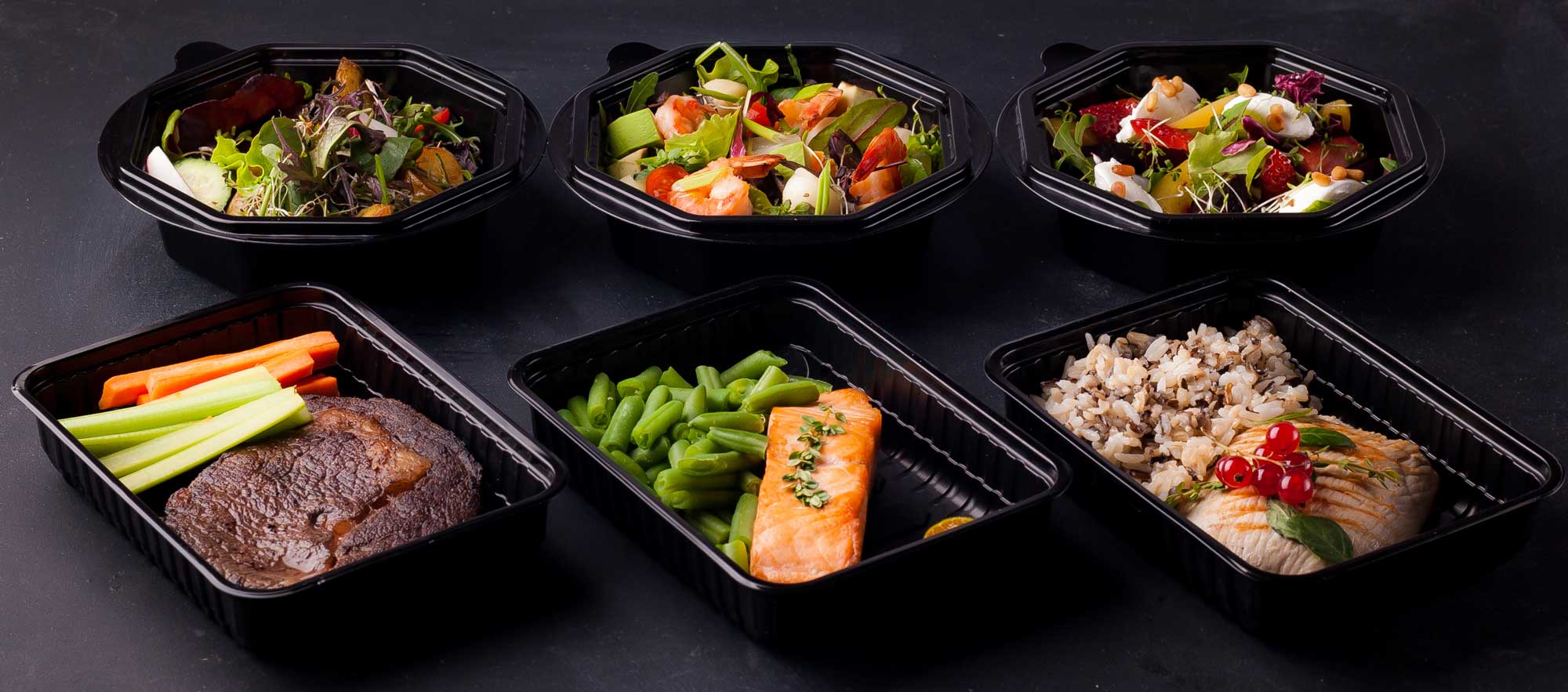
Meal delivery services run on complex processes. Drivers often start and end their day at different locations. Meals need to be stored at specific (and different) temperatures while in transit. And you have a slew of expenses to manage, from fuel costs and vehicle maintenance to reusable container sterilization.
Optimization is the key to making sure all of these processes are running at maximum efficiency. It’s a practice that helps you eliminate unnecessary expenses, drive revenue, and expand your operations.
At OptimoRoute, we specialize in optimization, and we’ve learned what works from partnering with delivery and field service businesses all over the world. If you want to optimize your meal prep business to increase revenue, grow your customer base, or expand your territory, here are seven proven tactics you need to know:
- Outfit Your Business With Advanced Technology
- Start Delivery Planning as Early as Possible
- Prepare for Growth Before It Happens
- Combine Drop-Off and Pickup Routes
- Manage Your Fuel Consumption
- Automate Customer Notifications
- Keep an Eye on Market Trends
Also included in this article: How to Use OptimoRoute with Your Meal Prep Business
1. Outfit Your Business With Advanced Technology
Smart businesses embrace modern technology because it makes tasks simpler, faster, and/or more affordable. For food delivery services, route optimization software does all three. Manual planning is inefficient and prone to error, and it eats up valuable time you could (and should) be spending doing other things.
Route optimization software cuts driver scheduling time down by hours per week, even for small businesses. Oco Meals, a meal kit delivery service in Vancouver, reduced their delivery planning time by 90% after they ditched manual planning and started using OptimoRoute. They did this while tripling their planning capacity.
Route optimization is just one of many software that can simplify your day-to-day operations. If you feel like you’re spending too much time executing a particular task—especially one that’s done on a computer—there’s likely a software that can help. For example, you can use Meallogix to create shopping lists, design nutrition labels, and calculate recipe costs. Struggle with social media marketing? AdEspresso simplifies the ad creation process for specific platforms like Facebook, Instagram, and Google.
Pro Tip: You can connect OptimoRoute to your point of sale system or online ordering interface using our API integration.
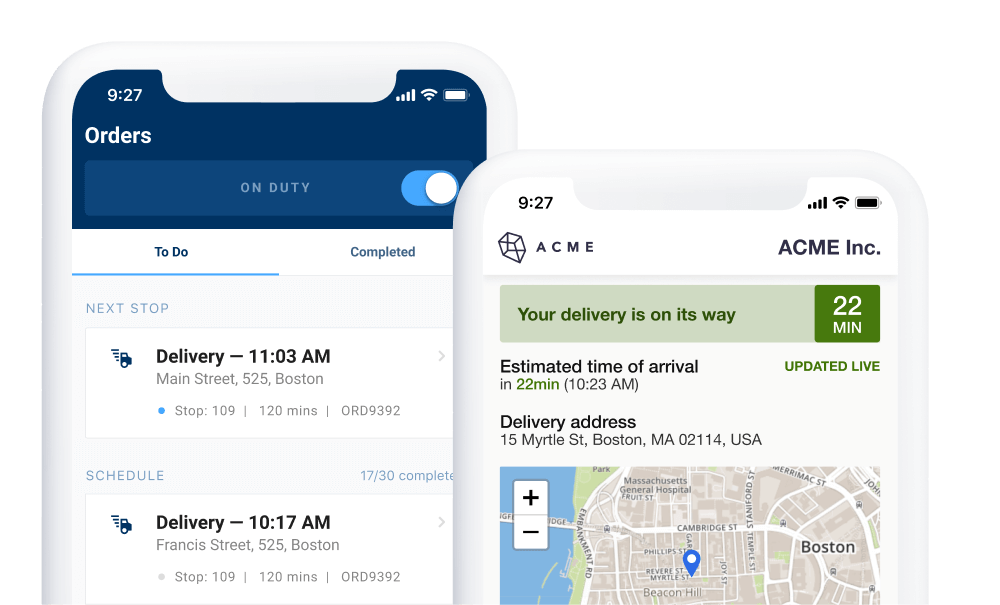
Reduce your operational costs by 30%
Increase delivery capacity by 43%
Plan 7x faster
2. Start Delivery Planning as Early as Possible
Early planning is the key to logistical success. For food delivery services, this means determining your staffing needs, scheduling delivery windows, and mapping out delivery territories in advance. You may need to adjust these plans when it comes time to execute them, but pre-planning will better set you up for success.
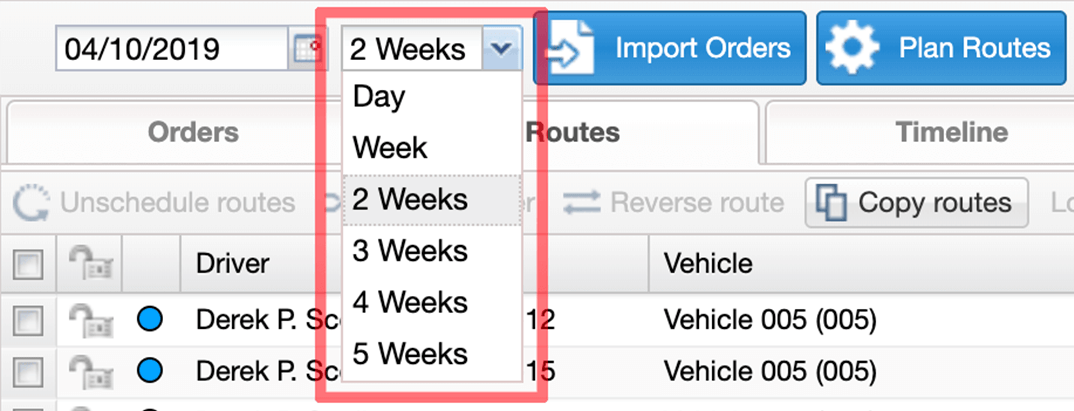
Pro Tip: You can plan up to five weeks at a time using OptimoRoute, and the software will clearly show you if you don’t have enough drivers scheduled to cover demand during a particular shift. Our “Return to Depot” feature lets you send drivers back to your warehouse or storage facility to pick up more meal kits if they don’t have enough cargo capacity to deliver all of the orders in one run.
3. Prepare for Growth Before It Happens
It’s important to plan for growth by establishing capacity plans and assessing your team’s maximum capabilities. Capacity planning keeps you from scrambling to catch up when a surge of orders comes in.
Make sure you know how long it takes a driver at each stop and how many orders each of your drivers can handle in a single shift. If your drivers are assigned to specific territories, these numbers may fluctuate considerably between drivers and the areas they serve, so you need to break the numbers down for each individual driver, then average them across your team.
Use advance planning (which we talked about in the previous section) and your capacity plan to lay out specific steps for growth. Calculate exactly how many orders your current team can handle to determine when you’ll need to hire new drivers, and when you’ll need to add a vehicle to your delivery fleet.
Pro Tip: OptimoRoute keeps track of your team’s delivery performance and stores it in your analytics dashboard. You can access this information at any time and adjust capacity plans based on hard data. You can use these insights to scale your meal kit delivery services and improve process efficiency so you can handle more orders without expanding your team or fleet right away.
Tomato Mountain Farm used insights gleaned from their OptimoRoute analytics to reformat their delivery system and remain profitable while accommodating a 4x growth in their subscriber base. Tomato Mountain Farm looked at their territory delineations and how long it was taking each driver to execute deliveries. They saw that by reassigning delivery territories and breaking their customers into geographical zones that would each receive deliveries on a set day of the week, they could increase efficiency.
Tomato Mountain Farm used analytics to chart a course for growth. They were able to scale their business from 300 to 1,200 subscribers in just a month and reinvest at the right time to add vehicles to their fleet.
4. Combine Drop-Off and Pickup Routes
If you’re one of the many meal kit services that offer reusable packaging, you should combine your drop-off and pickup routes. You can cut down on planning time for your dispatcher and driving time for your fleet by combining forward and reverse logistics. This also reduces expenses and boosts your bottom line.
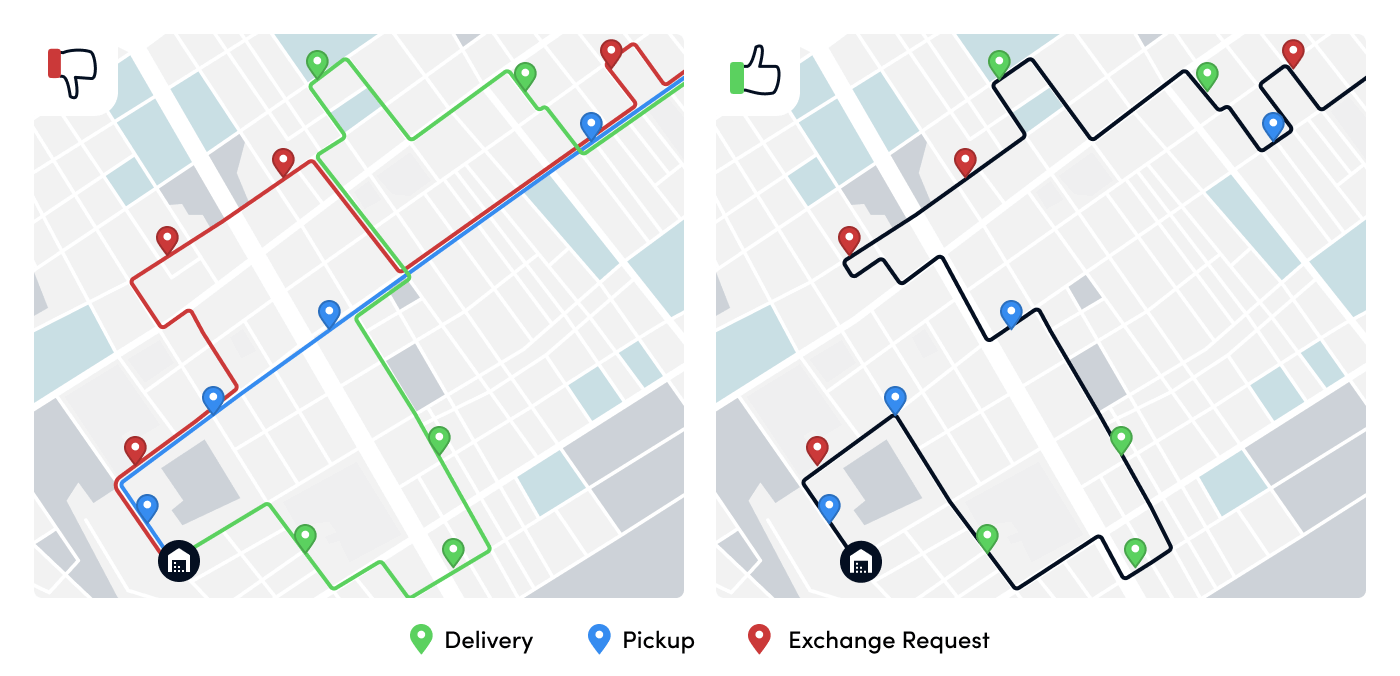
Combining drop-off and pickup routes is also a great way to attract eco-conscious consumers and build brand loyalty. Local Roots NYC used this strategy to reduce their environmental impact even while facing COVID-19 restrictions. As a purveyor of hyperlocal and “beyond organic” foods, Local Roots NYC knew their customers would appreciate efforts to reduce their carbon footprint even as they transitioned to contactless deliveries. Combining drop-off and pickup routes helped Local Roots NYC tackle a rise in order volume from 50 to over 1,000 orders per week.
Pro Tip: You can use OptimoRoute to factor in each vehicle’s cargo capacity and get the most efficient routes for your forward and reverse logistics. You can also set routes to begin and end at different locations if drivers need to drop off soiled containers at a separate location, such as a recycling facility, at the end of their shift.
5. Manage Your Fuel Consumption
Use fuel management to cut wasted spend. Teach your drivers conscious driving tactics, regularly maintain your vehicles, and make sure your routes are fully optimized.
According to research conducted by the National Renewable Energy Laboratory, delivery fleets can reduce fuel consumption (and, therefore, fuel expenses) by 5 to 10% simply by having drivers implement energy-conscious driving tactics. These behaviors include turning their engines off at stops rather than idling and not exceeding driving speeds of 60 mph.
A reduction of 5 to 10% may not sound like a lot, but it adds up quickly. A five-truck fleet driving 2,000 miles per week combined could save $6,210 per year (based on the 2020 standard mileage rate of 57.5 cents). For aggressive drivers, the savings associated with shifting these types of driving tactics can yield as much as a 20% reduction in fuel consumption.
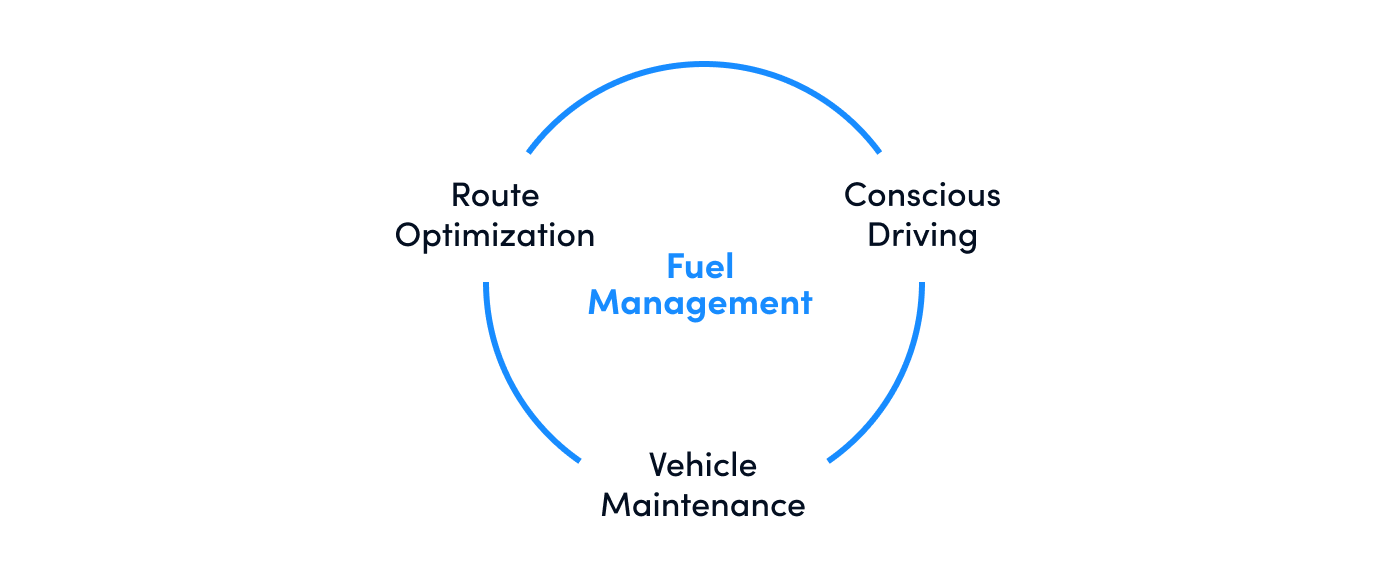
Pro Tip: Route optimization software makes it easy to cut down on fuel expenses and reduce your carbon footprint. Hardie’s Fresh Foods reduced their overall fleet mileage by 20% when they started optimizing deliveries with OptimoRoute. They also increased their delivery capacity by 14%, reduced driver expenditure by 12%, and their on-time delivery rate rose by 5%—an impressive feat, especially for a company with over 2,400 customers.
6. Automate Customer Notifications
You may not have a customer service or IT department the size of those at HelloFresh or Blue Apron, but you’re still going to have to compete with these meal kit giants. You need to automate as many processes as you can—even customer communications.
Automate email campaigns and customer outreach wherever possible. Make sure your customers receive realtime order tracking when their meal kit is out for delivery. OptimoRoute customers have seen as much as a 70% reduction in the number of incoming service calls just by using this feature. Realtime order tracking helps you build trust with your customers. Live visibility enhances your customer experience, which can increase repeat sales and customer lifetime value.
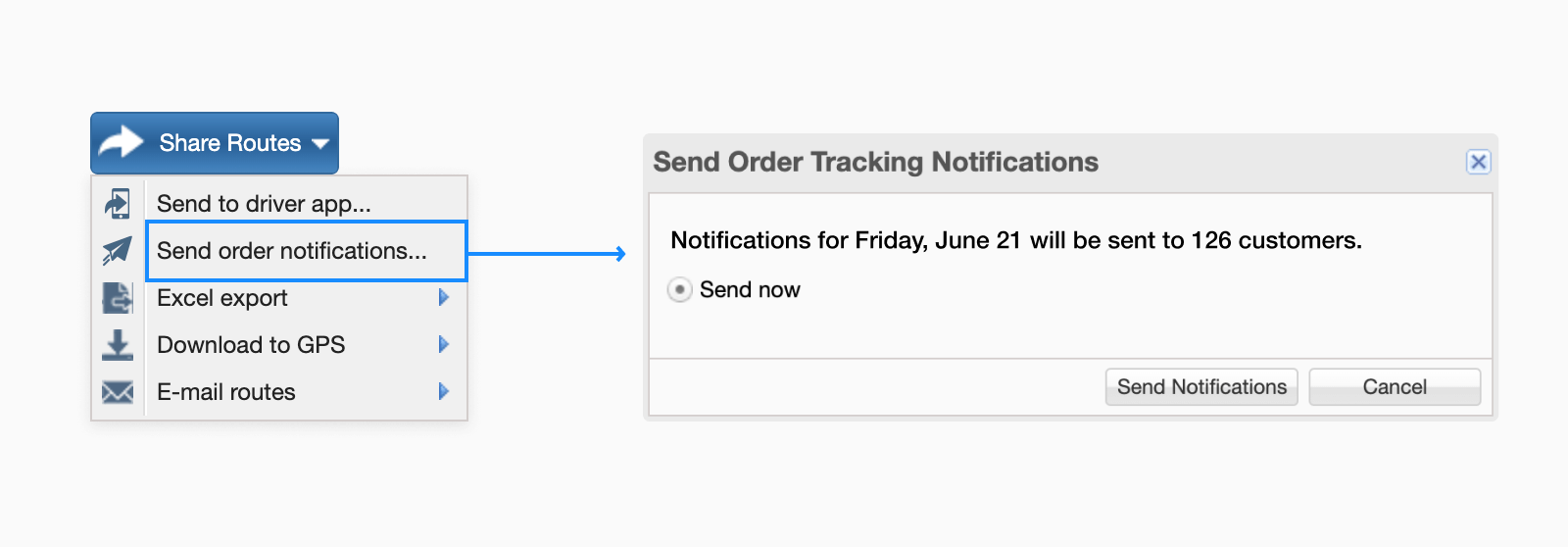
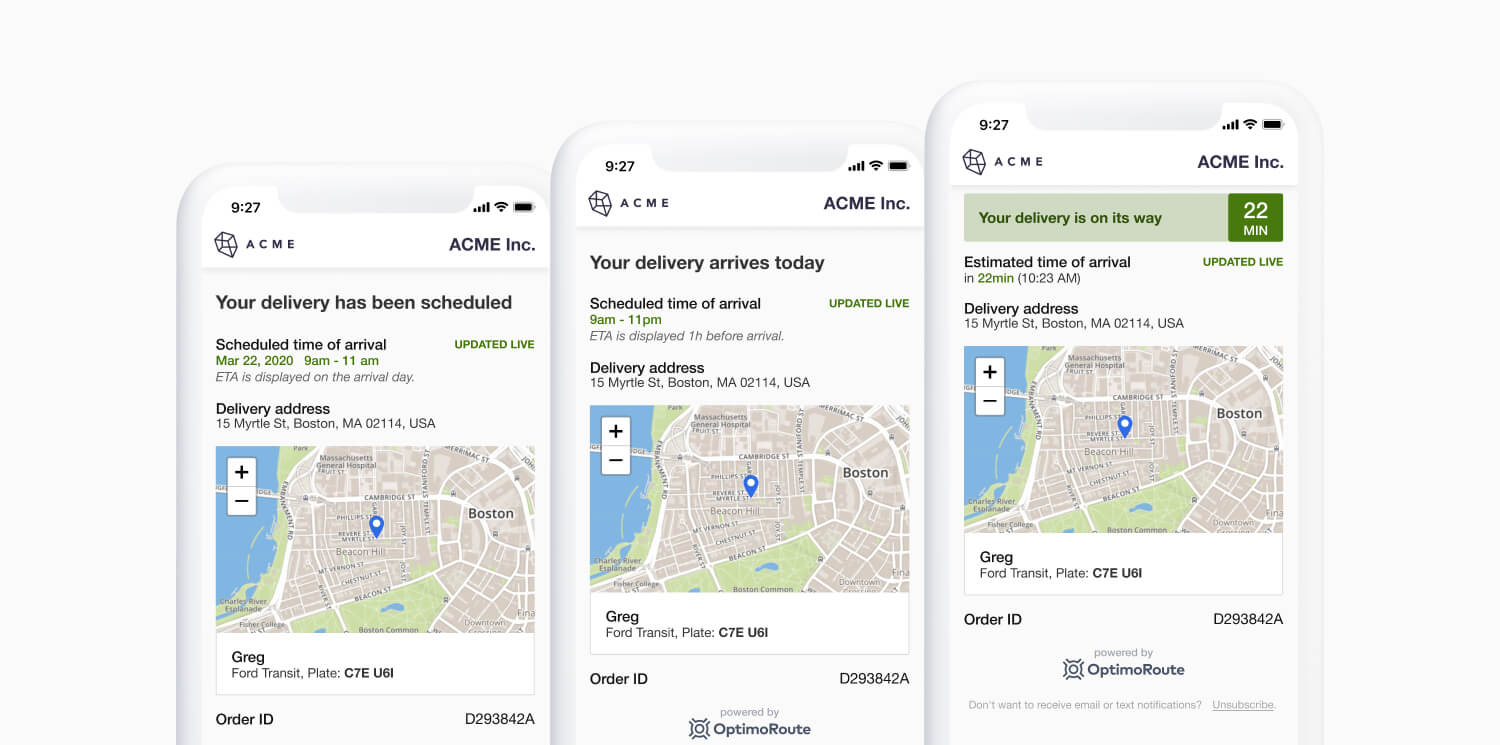
Pro Tip: Live tracking helps everyone: you, your team, and your customers. 2 Guys with Knives, a meal kit delivery company in Vancouver, uses OptimoRoute live tracking to monitor drivers in the field and customer notifications to let their clients know exactly when orders will be delivered.
7. Keep an Eye on Market Trends
To stay competitive, you need to keep track of consumer behavior changes and adjust your offerings to accommodate those shifts. Consumers change their minds. The key is to stay abreast of what’s going on in your industry, know what your competitors are offering, and regularly review your own analytics.
Knowing what diets and lifestyle choices are trending will give you an edge when it’s time to create your meal options. For example, both keto and vegan diets have risen in popularity over the last few years. Customer expectations surrounding delivery services have changed, too. We’re now living in a world where “on-demand” isn’t just a term used by video streaming services.
Pro Tip: You can use OptimoRoute analytics to track new orders within specific territories. Tomato Mountain Farm uses this feature to gauge how their offline marketing efforts are performing. They monitor new sign-ups within specific geofenced areas where they’ve recently executed ad campaigns or marketing efforts.
How to Use OptimoRoute with Your Meal Prep Business
Using OptimoRoute is easy—just follow these simple steps:
- Upload orders from an Excel spreadsheet or other document containing an order ID number, delivery address, and scheduled delivery window (if applicable). You’ll be able to make adjustments after orders are uploaded.
- Input order and vehicle constraints such as cargo capacity, delivery windows, and territories. These can be saved for future planning.
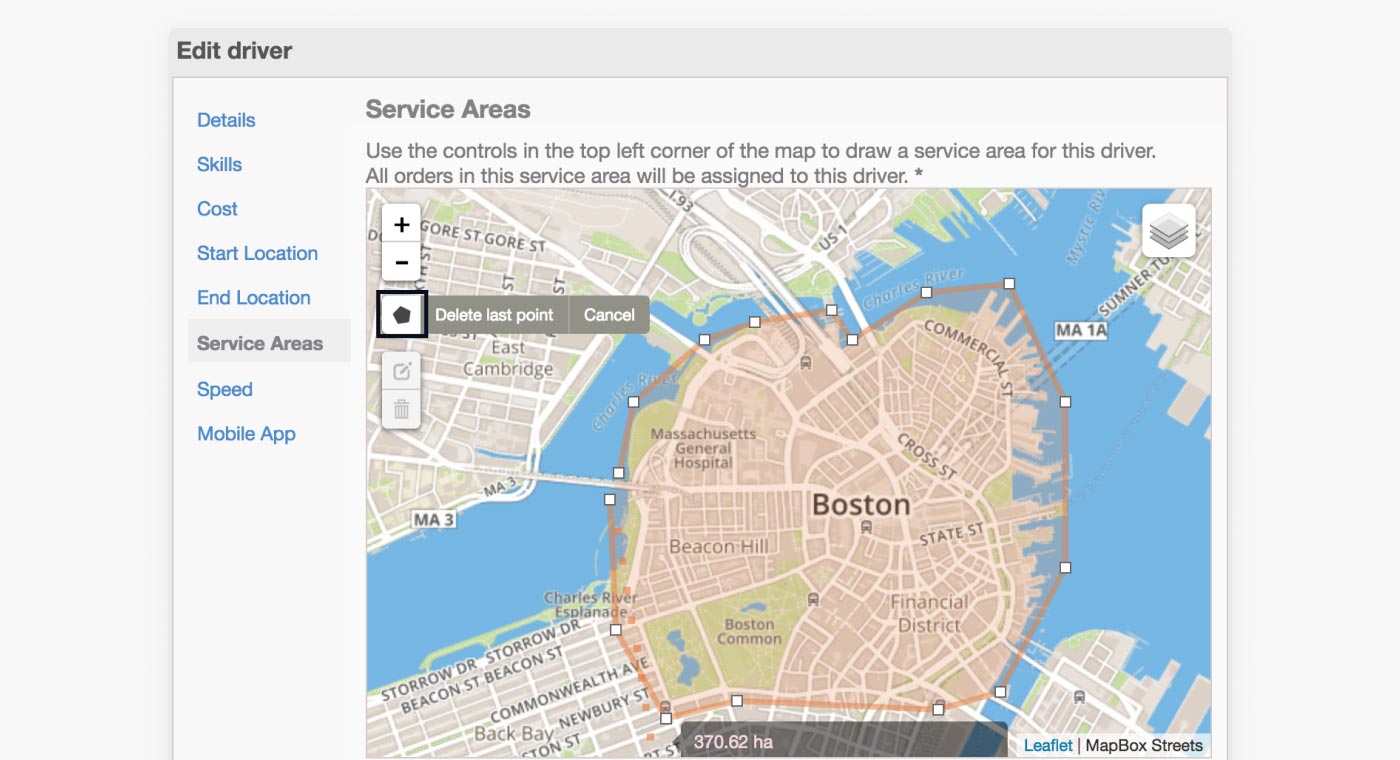
- Input driver constraints such as days off and overtime limits, and set driver breaks. These settings can also be saved.
- Customize your workload balance. Choose whether you want routes to be optimized for the lowest cost per contract driver, evenly distributed stops, or a combination of the two.
- Click “Plan routes” and get optimized routes in seconds.
- Make adjustments if needed. You can also add more orders later and recalculate routes.
- Send routes to drivers. Dispatchers can adjust routes and send them directly to the app on each driver’s phone, even after they’ve already departed your warehouse or facility.
- Watch deliveries in action with live tracking via the OptimoRoute dispatcher interface.
Take Our Software for a Test Drive
Efficiency is essential for your business’s success, whether you’re just starting out or looking to expand into new territories. At OptimoRoute, we’ve helped meal kit businesses launch, scale, and conquer delivery operations with ease. We’re here to help you at every step of your delivery journey, and we offer a 30-day risk-free trial—so you can take our software for a test drive at no cost.
Try OptimoRoute™ for Free
No installation or credit card required


